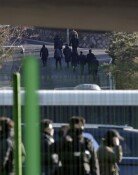[Editorial] Koguryo Disappeared
It is said that worldwide-reputable websites are introducing Korean history as one which began in 668 A.C., when Silla unified the three nations. I cannot suppress the anger and shame I feel. Our history of 5,000 years, which began from Dan-gun, being reduced to only 1,300-odd years, and Koguryo, the nation which we are proud of most, now a disappeared kingdom.
What is more appalling is that it was a nongovernmental organization that discovered such an absurd distortion of our history and is trying to correct it. What in the world has our government and the related ministry been doing?
China recently is propelling a project called Work process of Northern East (a study of northern east part of China) in order to include the history of Koguryo into Chinese history. The purpose of the project, which is supported with a large budget over five years, is to prove that Koguryo was a local government established by a minority race that had lived in an outlying district of China, and that it was a government which maintained its independence from the central government and was commissioned to govern that district by the central government. This is thought to have something to do with Chinas conducts, which are hindering UNESCO (the United Nations Educational, Scientific and Cultural Organization) from naming ancient tombs of Koguryo as a world cultural heritage last year and carrying out a wholesale inspection of the tombstones of Kwangaeto the Great and ancient tombs in Jian, which are material evidences of Koguryos taking control of Manchuria.
Historians are analyzing that such behaviors of China are intended to prevent demands for independence and the self-determination rights of minority races in China beforehand and to rule out the possibilities of unrest of Korean residing in Jilin, Heilongjiang, and Liaoning, which are expected to come after the Korean peninsula is unified.
It is not time to sigh now. The related ministries and offices of the government, the Ministry of Education, Human Resource Development, the Ministry of Foreign Affairs and Trade, the Ministry of Culture and Tourism, the Ministry of Information and Communication, and the Korean Information Service (KOIS), should provide a government-scale countermove and draw a scheme for long-term support as soon as possible. The academic world should also hurry to provide sufficient historical material and logic against China, which has argued that the history of Geryeo and Palhae should be included in Chinese history for more than 20 years with more than a thousand papers on the subject. We cannot let our pride, the great Koguryo, which actually had existed for 705 years, degrade to be only an outlying district of China as a result of inaction from our generation.







